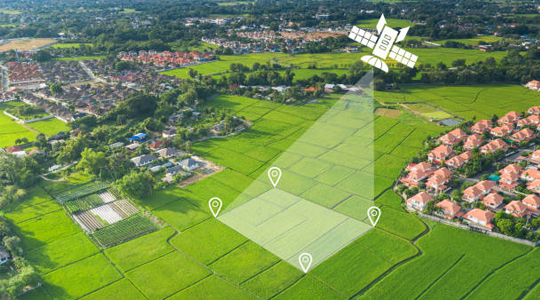
Constellations spoke with a panel at Satellite 2023 that included Dallas Kasaboski, analyst with Northern Sky Research (NSR), Kevin Tobias, Director of Product Management at Kratos, and Jack Waters, CEO at XipLink, about transformation at the edge, in orbit and on the ground, and what that means for the industry.
The main driver for digital transformation, Kasaboski said, is for satellite to reach more customers and to go global, but that will require making it ‘less special’ and separate and more digital and integrated to meet telcos and other service providers.
The ‘Ultimate Edge’ in Orbit
On the changes in space, he pointed to software-defined satellites as the “next big thing,” with onboard computing on the communications side that can change beams, signals, and frequencies, even the satellite mission itself after launch.
With Earth observation satellites, he said the problem was that too much data went unused or was of poor image quality, and the ability to “tell the satellite to remove what is irrelevant to me” before downloading would save time and money.
Calling satellite the “ultimate edge,” Waters of XipLink said the long-term idea is to “push remote computing as far out as you can,” and that surveillance video, for example, could be cut back and minimized for delivery to a customer instead of sending it back to the central office over limited bandwidth.
The Terminal Condition
With the space layer innovating and becoming more dynamic, Tobias of Kratos said the ground will need to do the same, and that the terminals that connect users at the far edge will need to be open, standard-based, and virtualized.
Virtualized functions that disaggregate hardware from software, can then run on general purpose compute, which he compared to the universal customer premise equipment (UCPs) that the telcos have used for years to gain flexibility, reach, and economies of scale.
“Once you do that,” he said, referring to digitally transformed terminals, “the vision of converging with terrestrial technologies becomes a reality.” Users can then pick the vendor of their choice, and mix and match network functions without being locked into a specific hardware or function.
Another key advantage of software-enabled terminals, he added, was futureproofed operations.
“As business needs evolve or the network changes, you’re able to spin up new network functions as you need.” He added that the virtual functions can then be orchestrated on one platform for “zero touch provisioning,” rather than physically installing hardware at a remote site and cabling functions together.

The Software-Defined Network
Waters of XipLink noted how the satcom business was beginning to follow how the telcos use software-defined networking to automatically build services and scale reach to many endpoints. By using software-defined networking, he said, services can be built “start to finish for higher, faster deployment,” which should improve customer satisfaction.
But he added, not all satcom is virtualized yet, and “If it’s not digital, you can’t just spin it up on a cloud like the telcos do with their standard products.”
He hoped that satcom would be completely virtualized soon, “And let’s pray that we can also do end-to-end with a telco service all the way to the end point in a software-defined way.”
Catching Up
One area where satellite is figuring out how to work with telcos and mobile network operators (MNOs) is direct-to-device service, said Kasaboski of NSR, citing major satellite direct- to-cell deals with Apple, Globalstar, Starlink, and T-Mobile.
Noting that satellite has the global reach, but that the MNOs have the customers, Kasaboski said, “They’re realizing we can work together, and we can work with the same addressable market.”
“They’re narrowing that gap with the technology, digitally transforming what they do in order to disaggregate,” he added.
For satcom to further mainstream with telcos to reach all the people that haven’t been reached will require software-defined capability to the edge, said Waters of XipLink, “because it’s the only way they’re profitable.”
Then the MNOs and satellite companies will start to come together, he said, because satellite has been difficult to integrate, limiting its market share.

Over the Horizon
Looking ahead 10 years, Kasaboski said that satellite will be a vital component in any network, whether a telco or an MNO. And that going global will require part of the fleet to be digitally transformed so the satellite and the rest of the network can communicate cohesively.
Tobias of Kratos added that in 10 years it will be about the “internet of everything everywhere at a moment’s notice, whenever you need it.” He pointed to seamless connectivity and convergence between non-terrestrial and terrestrial networks such that “the user won’t know if you’re using 5G, 6G, satellite, Wi-Fi…it makes no difference. It’s transparent.”
To hear more about IT transformation at the edge in space and with terminals on the ground and how satellite is evolving to work with telcos and MNOS, click here.
